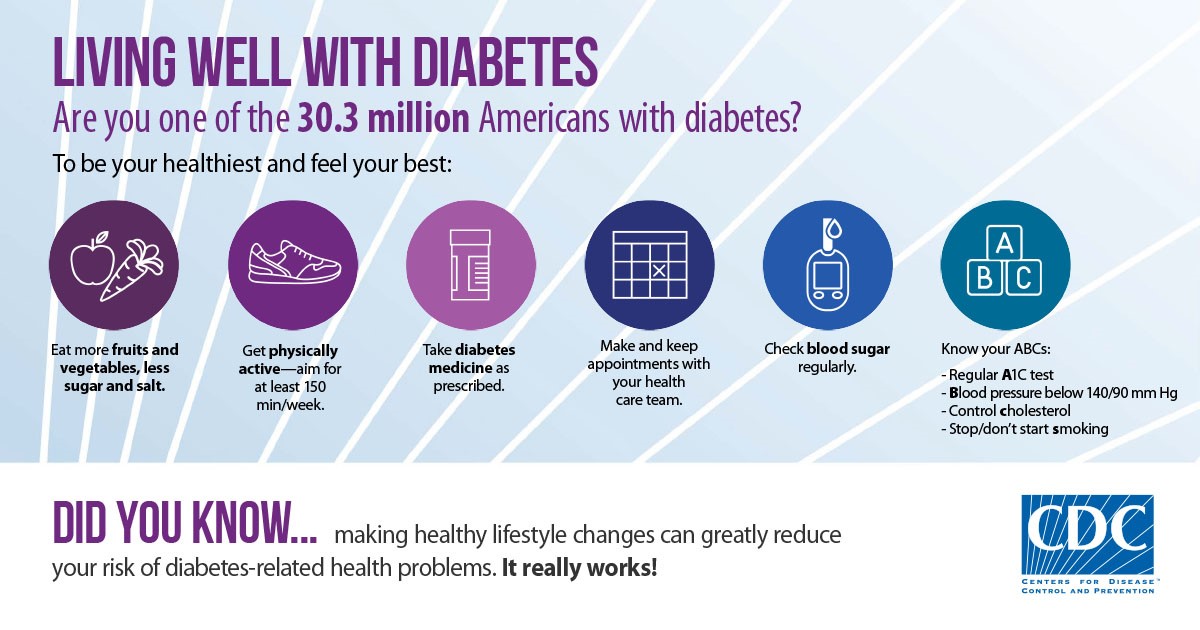Medical Conditions
Diabetes

Diabetes mellitus is a very serious metabolic disorder that prevents the normal breakdown and use of food, especially sugars (carbohydrates) by the body. It can damage the heart, blood vessels, kidneys, and neurological system and can cause a progressive loss of vision over many years.
Forms of Diabetes
There are multiple forms of diabetes, but the two most common forms are called type 1 and type 2 diabetes. Both forms can occur at any age, but a child is more likely to be diagnosed with type 1 diabetes.
About type 1 Diabetes
Type 1 diabetes is caused by inadequate production of the hormone insulin by the pancreas. When that happens, the body is unable to properly metabolize sugars, which build up in the bloodstream; these sugars (also called glucose) cannot be used by the body and are excreted in the urine. This leads to the major symptoms of diabetes:
- Increased urination
- Thirst
- Increased appetite
- Weight loss
About type 2 Diabetes
Glucose is found in the blood and is the body's main source of energy. The food you eat is broken down by the body into glucose. Glucose is a type of sugar that gives energy to the cells in the body. The cells need the help of insulin to take the glucose from the blood to the cells. Insulin is made by an organ called the pancreas. In children with type 2 diabetes, the pancreas does not make enough insulin and the cells don't use the insulin very well.

Controlling and Managing Type 1 & Type 2 Diabetes
It is essential to control diabetes properly in order to avoid complications.
- Management focuses on routine blood sugar monitoring, insulin therapy, given as multiple injections per day or through an insulin pump, and close regulation of a healthy diet.
- Maintaining blood sugars within a normal range can reduce the likelihood of symptoms of high or low blood sugars and decrease the risk of long-term health problems related to poor diabetes control.
- Eat healthy (More fruits & vegetables. Less sugar & salt)
- Get at least thirty minutes of exercise a day can help you manage your disease
Important Reminders:
- Check your blood sugar several times per day, using simple, chemically treated test strips and a blood sugar meter.
- If you take too much insulin: Your blood sugar can become too low which is called hypoglycemia, prompting symptoms, including trembling, a rapid heartbeat, nausea, fatigue, weakness, and even loss of consciousness.
- If you take too little insulin: The major symptoms of diabetes such as weight loss, increased urination, thirst, and appetite, can return.
Links to Learn more about Diabetes:
https://www.choa.org/medical-services/diabeteshttps://www.cdc.gov/diabetestv/youth.html
www.diabetes.org
© Copyright All Rights Reserved 2022